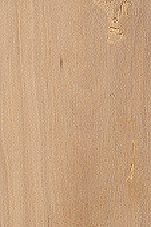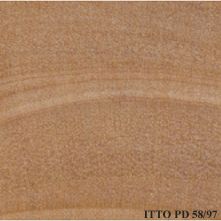
LOQUAT (Eriobotrya japonica)
Trade Name
Loquat
Scientific Name
Eriobotrya japonica (Thunb.) Lindl.
Family
ROSACEAE
Common Names
Paginggong (Malaysia); Lokwat (Malaysia); Papalaan (Indonesia); Pipae (Thailand); Sown traf nhaajt barn (Vietnam); Ton leap (Cambodia); Loquat; Lokwat (Indonesia); Neflier du Japon (France)
Scientific Name Synonyms
Photinia japonica (Thunberg) A. Gray; Mespilus japonica Thunb.; Crataegus bibas Lour.
Description Of The Tree
Botanical Description
It is an evergreen small to medium-sized trees up to 30 m tall. The bole is up to 70 cm in diameter, slightly fluted at base or rarely with buttresses.
Natural Habitat
This species is probably original from Southern China, but it is widely cultivated for its fruits in the tropical and subtropical countries.
Plantations Available?
It is widely cultivated for its fruits.
Wood Identification
Anatomic Description Of Wood
Wood diffuse porous. Vessels exclusively solitary (over 90%). Tangential diameter of vessel lumina 100 micras or less (very small). Occasionally vessels with colored deposits. Vessels per mm2 more than 20 (very abundant). Occasionally helical thickenings in ve Apotracheal axial parenchyma diffuse and/or diffuse in aggregates. Paratracheal axial parenchyma scanty and/or vasicentric. Occasionally prismatic crystals in non-chambered axial parenchyma cells. 5 to 8 cells per parenchyma strand. 4 to 10 rays per mm (medium). Occasionally body ray cells procumbent with mostly 2 to 4 rows of upright and/or square marginal cells (Kribs-II). Body ray cells procumbent with one row of upright and/or square marginal cells (Kribs-III). Fibers very thick walled. Fibers with distinctly bordered pits.
-
 Wood Macro Photo Tangential Plane
Wood Macro Photo Tangential Plane
-
 Wood Micro Photo Of Transversal Section
Wood Micro Photo Of Transversal Section
Availability
Cites Status
Unrestricted
General Wood Description
Color
The heartwood is pale purple-brown with darker streaks, not clearly differentiated from the sapwood.
COLOR INDEX (1=Black, 7=Light yellow,white)
5
Grain
The grain is mostly straight
Texture
Fine texture is reported in this species.
Natural durability index (1= Very high durability, 7=Vey low durability)
4
Wood Physical Properties
Basic Density or Specific Gravity (O.D. weight/vol. green) (g/cm³)
0.79
Air-dry Density (Weight and volume at 12%MC) (g/cm³)
0.91
Total shrinkage Tangential (Saturated to 0%MC) (%)
11.8
Total shrinkage Radial (Saturated to 0%MC) (%)
7.3
Drying Defects
Ease of Drying: Seasoning is reported to be good. Drying Defects: It is susceptible to sap-stain.
Dimensional stability ratio (Total Tangential Shrinkage %/Total Radial Shrinkage %)
1.6
Wood Chemical Properties
Wood Mechanical Properties
Bending Strength (MOR),12%MC (kgf/cm²)
971
Stiffness (MOE) 12%MC (kgf/cm²)
128358
Compression parallel to fiber 12%MC (kgf/cm²)
592
Compression perpendicular to fiber 12%MC (kgf/cm²)
92
Shear strength radial 12%MC (kgf/cm²)
87
Janka hardness (side) 12%MC (kgf)
519
Workability
Machining
Machining of this species is easy to fair.
Moulding
It is easy to mold.
Turning
30
Nailing
Nailing behavior is reportedly fair to poor.
Finishing
It has a good finishing.
Polishing
Polishing of this species is reportedly easy.
REFERENCED USES
End Uses Summary
PLYWOOD AND VENEER, TURNING, BENDING, TOOLS, tool handles, agricultural tools, OTHER AND MUSICAL INSTRUMENTS, handicrafts, moldings
Panels, Veneers
- 25 - Directory of Timber Trade Malaysia
Turning
- 30 - Embassy of Honduras in Japan
Bending
- 35 - Embassy of Myanmar in Japan
Tools
- 42 - Utilización Industrial de Nuevas Especies Forestales en el Perú.
Tool Handles
- 43 - Maderas de Bolivia (Características y Usos de 55 Maderas Tropicales)
Agricultural Tools
- 44 - Atlas of Peruvian Woods
Other & Musical Instruments
- 63 - Madeiras do Brazil II
Handcraft
- 66 - Maderas latinoamericanas. VII. Caracteristicas anatomicas. propiedades fisicomecanicas, de secado, y tratabilidad de la madera juvenil de Cordia alliodora (Ruiz & Pav. Oken.)
Molding
- 79 - Padronização da Nomenclatura Comercial Brasileira das Madeiras Tropicais Amazônicas, Sugestão
Please Provide Information To View Producer Information